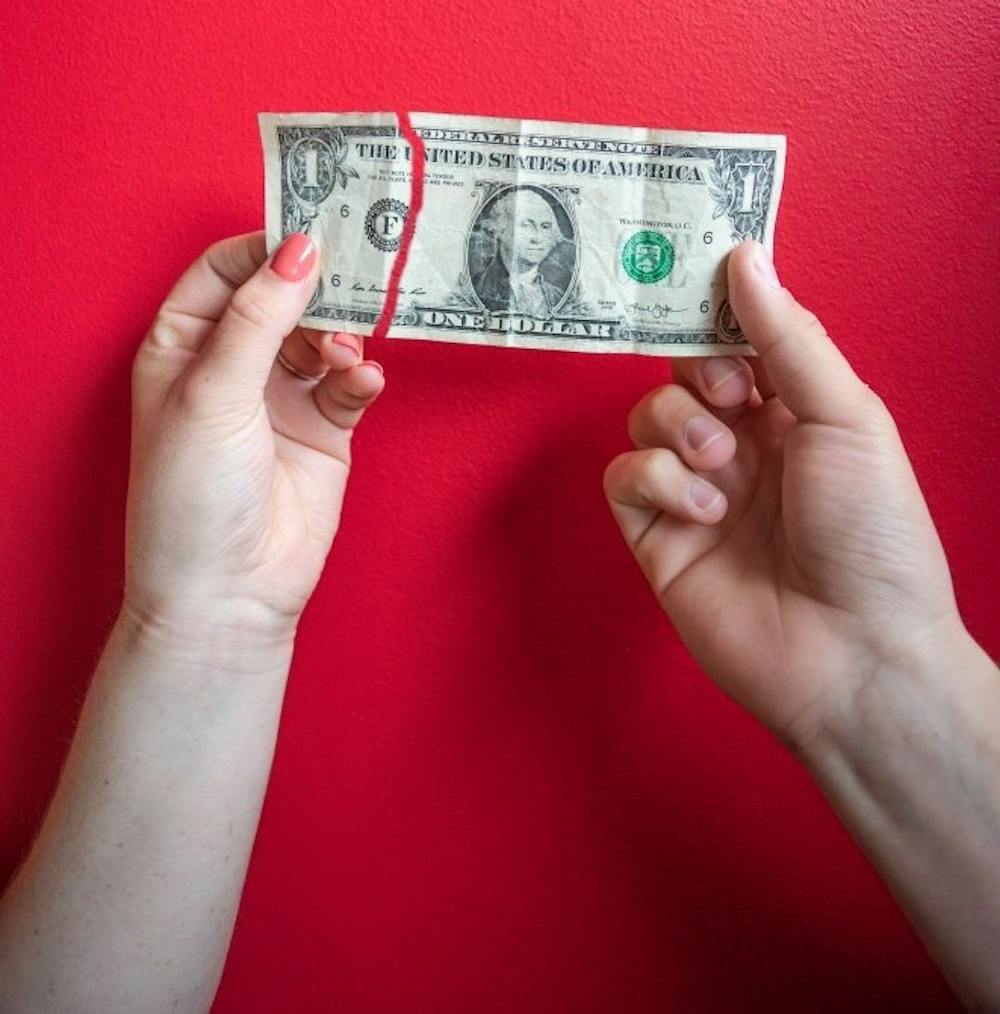Indiana has one of the biggest gender pay gaps in the country, ranking it 49th out of the states and District Columbia, according to a report by the American Association of University Women.
The report said in 2017, when the median annual earnings for all paid, full-time, year-round, working men and women in Indiana were compared, women made 73 percent of what men made, lower than the national earnings ratio of 80.5 percent. The median earnings in Indiana were $50,782 for men compared to $37,167 for women.
“What that doesn’t say, is that for the same work, women earn 80 cents on the dollar,” said Steve Horwitz, distinguished professor of economics at Ball State. “Across all the kinds of work, on average, women earn 80 cents per dollar.”
Horwitz said when comparing the difference in salaries between men and women with the exact same experience, education and training, doing the exact same kind of work, they get paid almost the same.
“I think that’s the most misunderstood part about things people discuss with the gender wage gap,” Horwitz said.
Emily Wornell, research assistant professor in the Indiana Communities Institute at Ball State, said people tend to think about the wage gap issue as black and white, but in reality, it is a really complicated issue.
“Best measurements that economists have looked at suggest that maybe there is about a 3 to 5 percent difference in pay gap that we can’t explain with all of those other factors,” Horwitz said. “So when we look at it the other way, women get paid 95 to 97 cents on the dollar.”
Wornell said this number is 7 percent and that it is completely due to gender bias since there’s no other explanation for that difference.
The report also says that Indiana’s sixth congressional district, where Muncie is situated, ranks sixth out of the nine districts in the state for gender pay gap with women making 73.1 percent of what men make. This is well below the seventh district in Marion County, which ranks first at 85.5 percent.
According to a 2017 Pew Research survey, 42 percent of women said that they’ve experienced gender discrimination at work, compared to just 22 percent of men. Earnings inequality was reported as the most common form of discrimination with 25 percent of women saying they earned less than a man doing the same job in contrast to just 5 percent of men saying they earned less than a woman doing the same job.
Horwitz said employers alone are not responsible for the existence of the wage gap and instead, the existing sexism and misogyny in U.S. culture might play a role in producing different results for men and women as they approach the labor market.
Horwitz also said that women choosing to work jobs that pay less or offer flexible hours for reasons like household work and childcare, could stem from socialization and cultural beliefs.
“It’s not that those particular fields that women generally go into are not as valuable to society,” Wornell said. “It’s just that we’ve decided this for society over time, because of gender bias, to compensate those positions less.”
Horwitz said that the fact that it is mostly women having to make these choices, not men, might be indicative of sexism in U.S. culture.
“I think the best solution for that is actually paid paternity leave, and an expectation that men take it,” Wornell said.
And while Wornell said paid maternity leave is incredibly important, she also said paid paternity leave puts men and women on an even field.
Wornell said because promotions and raises largely depend on starting salaries, lower starting salaries for women mean that women have less financial capital built up for the long term. She said this could result in a proliferation of poverty among older women, especially single mothers which could lead to intergenerational issues of poverty.
“If we are able to work on poverty issues of women, particularly single mothers, the impact that would have on generations in our society would be huge,” Wornell said. “Gender pay gap is one piece of that and an important piece of that.”
Apart from sharing household work between men and women, Horwitz said encouraging women to go into higher paying fields if they choose to do so and encouraging employers to offer more job flexibility could help narrow the gap.
According to Ball State’s Global Reporting Initiative sustainability report for fiscal year 2016, a 4 to 22 percent gender wage gap was indicated across all employment categories at the university, except administrative support staff where women out-earn male counterparts by 10 percent.
The report also showed that while women account for 54.4 percent of Ball State’s employee base, they are underrepresented in leadership and top-ranking professorial roles.
Melissa Rubrecht, director of employee relations and affirmative action at Ball State, said that the university tries to adapt the best practices when it comes to ensuring nondiscrimination in employment.
Contact Rohith Rao with comments at rprao@bsu.edu or on Twitter @RaoReports.





